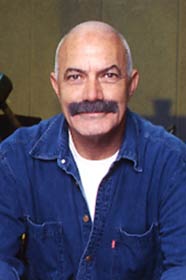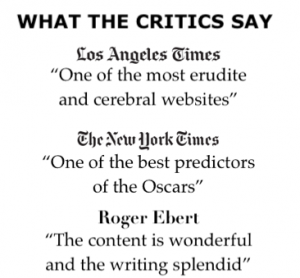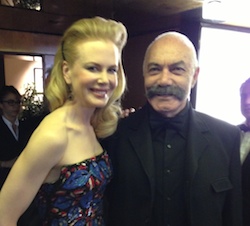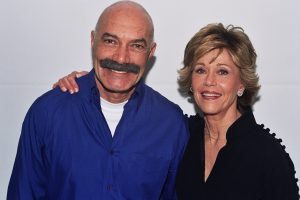Contents and style converge smoothly and brilliantly in Robert Altman’s Gosford Park, a luxuriant period drama that applies the Agatha Christie murder mystery format to a rigorous analysis of British society in the early 1930s. This terrifically accomplished film, easily Altman’s best work in a decade (since The Player and Short Cuts), is a large ensemble piece that flaunts all the who’s who in British and American cinemas.
A stellar cast of 48 players, among them Maggie Smith, Helen Mirren, and Emily Watson (who give the film’s most outstanding turns), parade on screen in what can be described as Altman’s Upstairs, Downstairs (the popular British TV series), a sharply satirical anatomy of Britain’s social class system at a crucial time of change. Primary target audience for this elegantly classy entertainment is the arthouse crowd, though strong critical support may broaden the film’s appeal and attract a larger constituency of intelligent viewers. Gosford Park received its world premiere on November 7, as opener of the London Film Festival, and USA plans to release the film stateside on December 26 to qualify for Academy Awards consideration.
Though Altman is a quintessentially American director working on a quintessentially British material, he has made a movie that very much belongs to his general oeuvre in both thematic and stylistic concerns. The maverick, ever-inventive auteur has established a name for making quirky, multi-layered films, which cast an astute, irreverent eye on American society. Over the past four decades, the ever-inventive Altman has made a career out of revisiting and reinventing classic genres, such as the war movie, M.A.S.H., an iconoclastic, furiously chaotic anti-war comedy; crime and detective yarns, The Long Goodbye; Westerns, the stylized and elegiac McCabe and Mrs. Miller; and even musicals, Nashville, a dazzling mosaic of the country music capital, composed of intricate interweaving of 24 archetypal characters.
Journeying to England for the first time, he has now turned his attention to a new genre for him, the murder mystery, though, once again, the movie operates on many other levels than the Whodunit. The yarn, scripted by Brit Julian Fellows, based on an idea by Altman and Balaban, is strategically set at a crucial time, in 1932 (a year before Hitler’s rise to power), illuminating a society and a way of life on the verge of extinction. The estate and its self-absorbed guests are completely oblivious of any outside political reality, other than their petty greed, personal agendas, and sexual obsessions.
The story’s duration is one long and intense weekend at Gosford Park, the magnificent estate of Sir William McCordle (Gambon) and his elegant wife, Lady Sylvia (Thomas), where an eclectic gallery of guests have been invited for a shooting party. The group includes Sylvia’s Aunt Constance (Smith), a grand countess who arrives with an Irish maid (Macdonald), real-life British matinee idol Ivor Novello (Northam), and an American film producer, Morris Weissman (Balaban), who comes to England to research his next Charlie Chan picture.
The downstairs area is dominated by butler Jennings (Bates), who supervises the men, including first footman, George (Grant), and McCordle’s valet, Robert (Jacobi). Prominent among the servants is a handsome loner, Parks (Croupier’s Owens), who claims to have been raised in an orphanage, and soon becomes the center of attention for various reasons. The stiff Mrs. Wilson (Mirren) is in charge of the maids, among them the vibrant head housemaid Elise (Watson), and Mrs. Croft (Atkins), who runs the hectic kitchen.
At first, the action is clearly divided between above-stairs, where the rich and famous assemble in gilded drawing rooms, and below-stairs, where their personal maids and valets swell the ranks of the house servants in the teeming kitchens and long corridors. However, this being an Altman film, it’s only a matter of time before a web of complexly intricate and emotionally tangled relationships is established between the upstairs and downstairs.
Altman’s most distinctive quality as a filmmaker is his facility for creating a realistic atmosphere of credible interrelationships, here manifest in the ways in which the characters are linked through sex, kinship, and, above all, class. The film unfolds as a mosaic, at the end of which the viewers are made to recognize the various bonds–and degrees of separation–among the guests. Ryan Phillippe is well cast as an opportunistic stud, Henry, who arrives as Weissman’s servant, but quickly seduces the rich and not-so-rich matrons. Ironically, it’s the lowly positioned Henry who most effortlessly crosses boundaries, bridging between the upstairs and downstairs through the sexual services he provides.
Altman should be commended for avoiding a number of pitfalls. First and foremost, entering into the Merchant-Ivory literary-cinematic territory, he proves that a period costume drama doesn’t have to be stuffy or stately. Second, reinventing the Agatha Christie type of movie (And Then They Were None, Murder on the Orient Express), Altman shows that, despite the fact that the story is largely confined to one setting, the movie doesn’t have to be stagey and overly theatrical. Indeed, though there’s an outdoor shooting party scene, Gosford Park is very much an indoor tale, one that uses the horror film conventions of the haunted house. But there’s nothing static about the filmmaking: Altman’s notoriously dynamic camera is restless, always on the move, tracking, panning, recording overlapping dialogue in different domains of the house.
Though an actual murder takes place, when McCordle is stabbed to death (there’s also suspicion that he might have been poisoned before), Altman avoids the melodramatics that usually mark such thrillers. The obligatory scene, in which the inspector gathers all the suspects in one room to unravel the murder, is conspicuously missing here. In fact, Altman portrays Scotland Yard Inspector Thompson (Frye) as a pompous, not-too-bright man who seems clueless. In a typically Altmanesque send-up, Thompson’s seen wondering around the house with a big pipe, asking silly questions and all but ignored by the guests.
Gosford Park serves in many significant ways as a companion piece to Altman’s masterpieces, Nashville, The Player, and Short Cuts. Like The Player, a scathing satire of Hollywood’s closed-ranks insularity that was enriched by cameo appearances from 66 celebs, Gosford Park employs Altmanesque irony in dissecting an isolated social class with its own peculiar values. And like Short Cuts, Gosford Park is a complex mosaic film that interweaves the lives of numerous characters. Yet, remarkably, perhaps because he looks at the British class system from a detached standpoint as an observer, Gosford Park lacks Short Cuts’ acidic, bitter tone that offended many with its hateful take on contemporary life in L.A. Altman’s sympathies are clearly with the downstairs inhabitants, but he doesn’t condemn or judge the rich and famous. In this and other respects, Gosford Park is more nuanced and subtle than Altman’s previous endeavors.
It may or may not be a coincidence but Gosford’s ensemble (48 parts) is exactly twice as large as that of Nashville. Space limitations preclude a description of all the characters–and the thesps who inhabit them–but suffice is to say that most emerge as individual figures with distinctive backgrounds and interests.
Altman’s lightly ironic touch is evident throughout. Since Gosford Park is rooted in the British tradition of comedy of manners, there’s nasty humor and wickedly bitchy one-liners, delivered with great panache by Maggie Smith, who renders the movie’s most eccentric performance, for which she’s likely to be nominated for a supporting actress Oscar.




Speak Your Mind